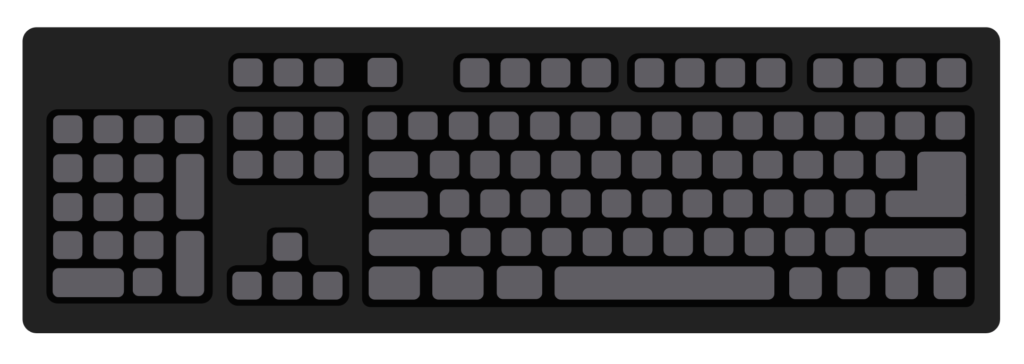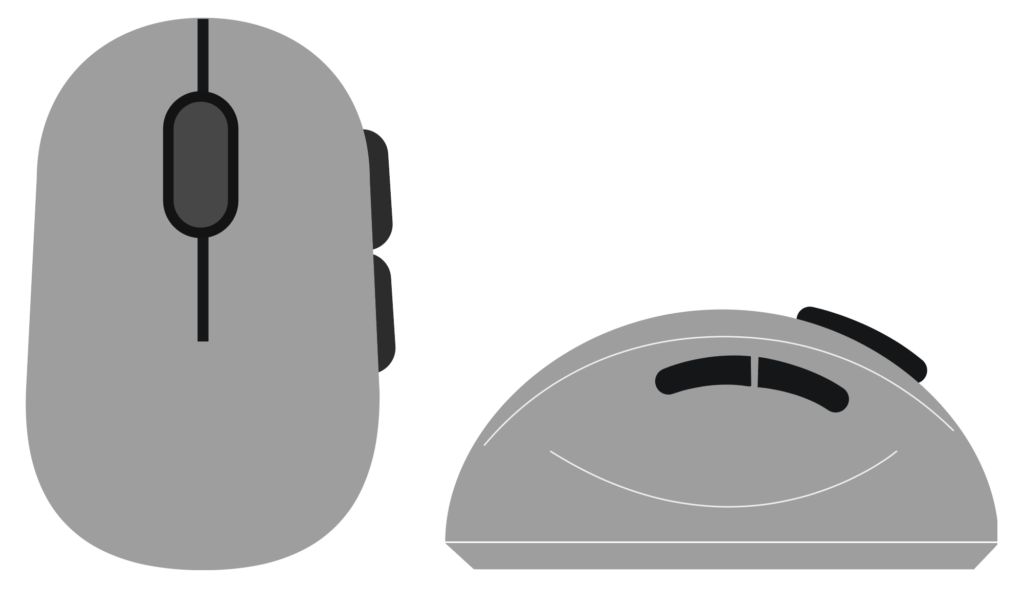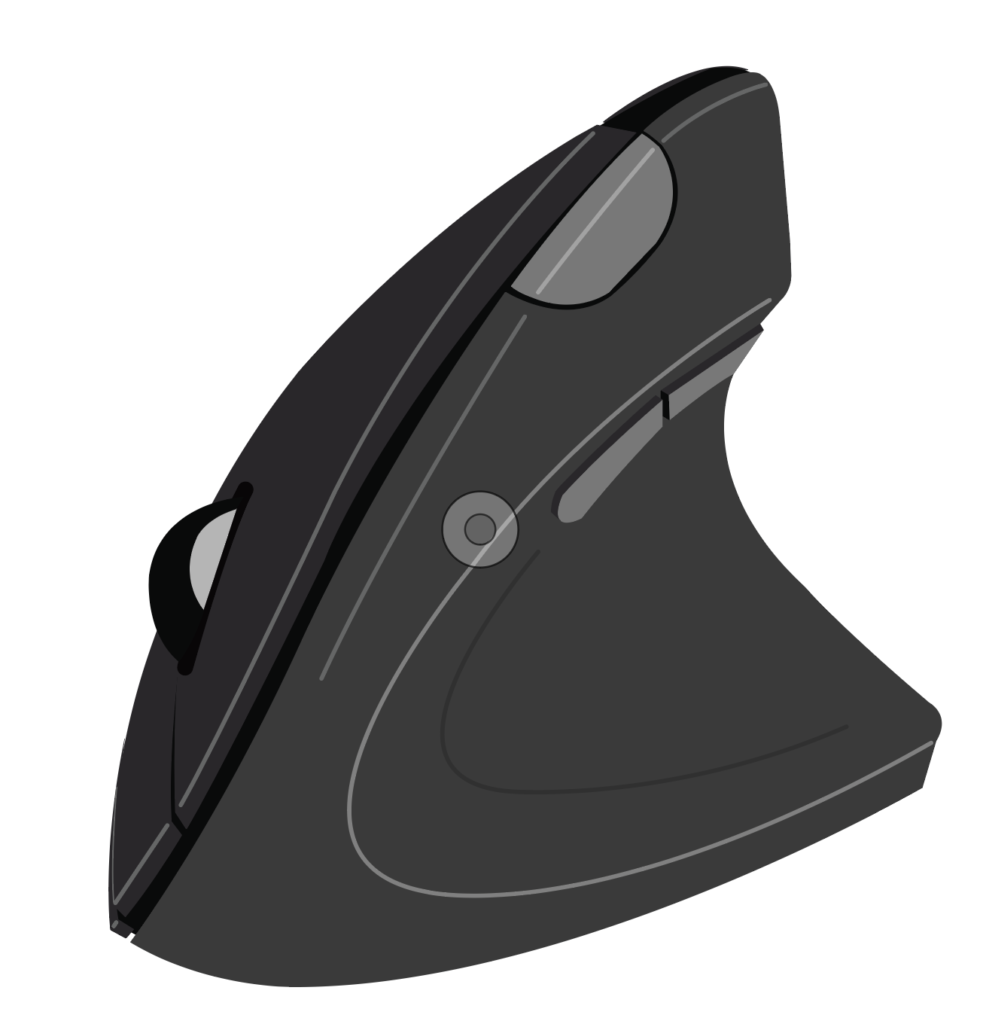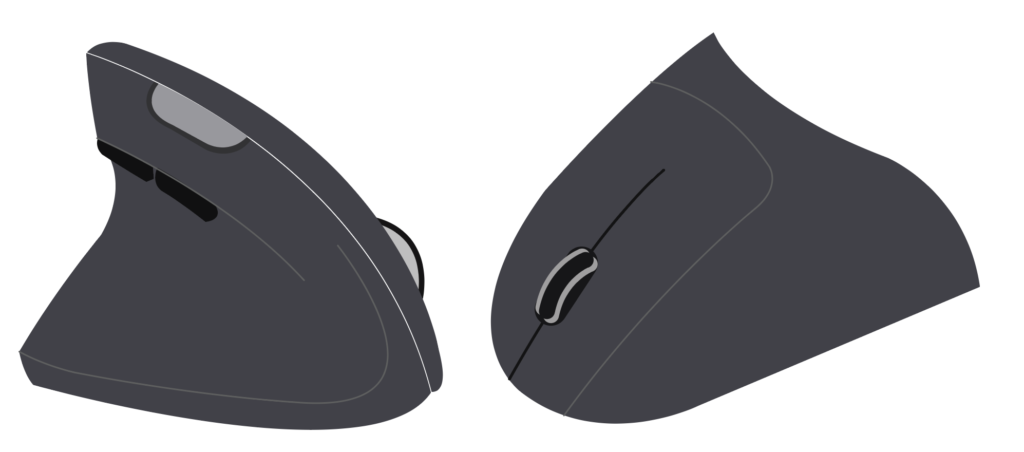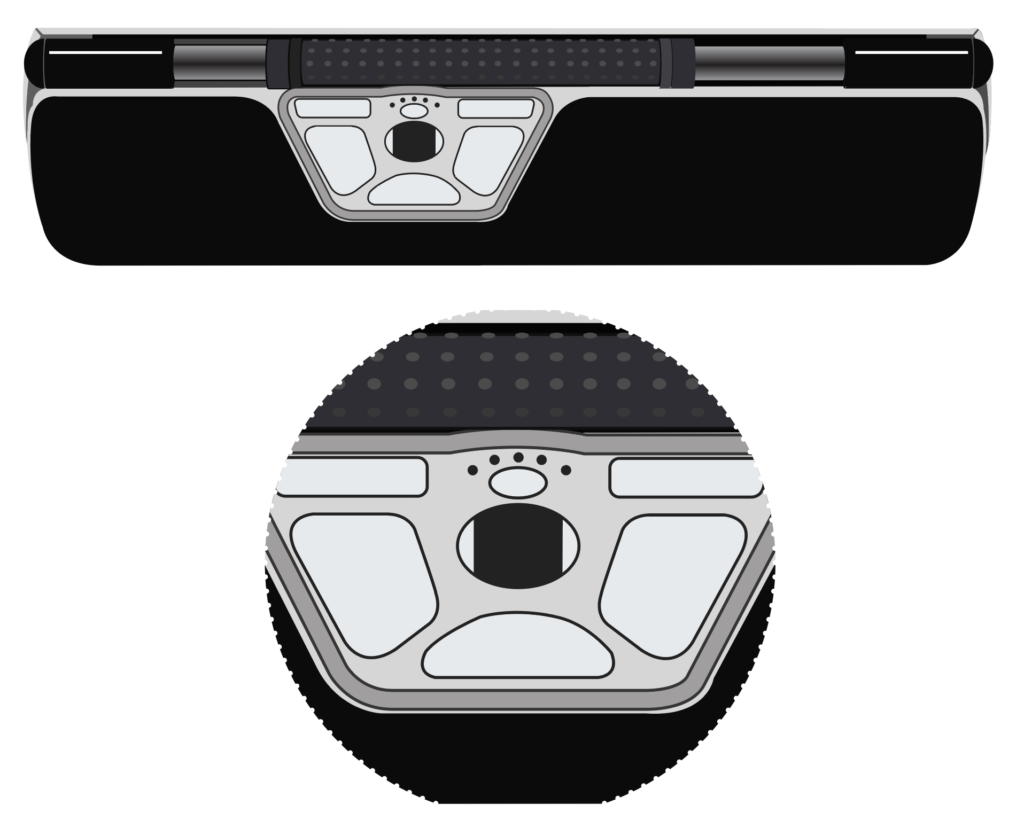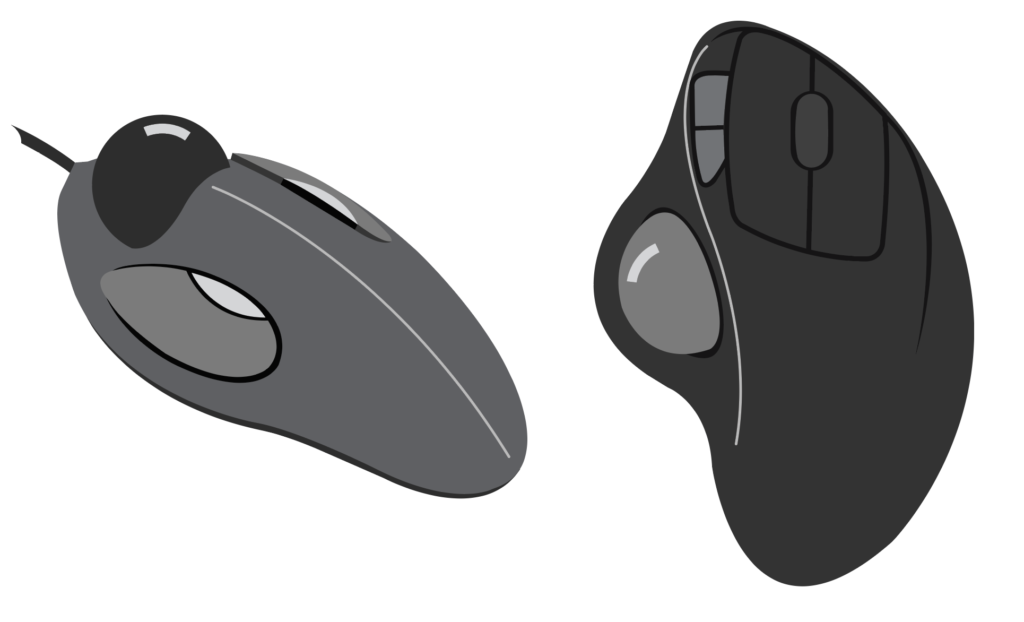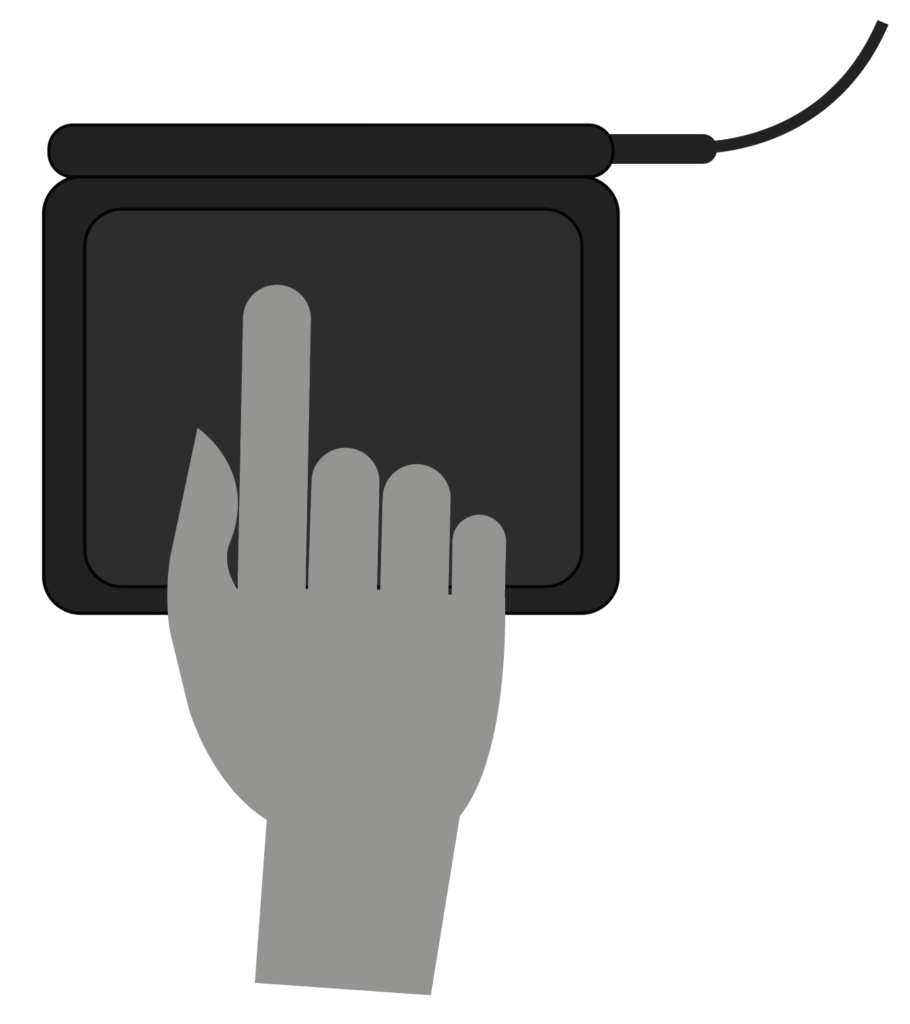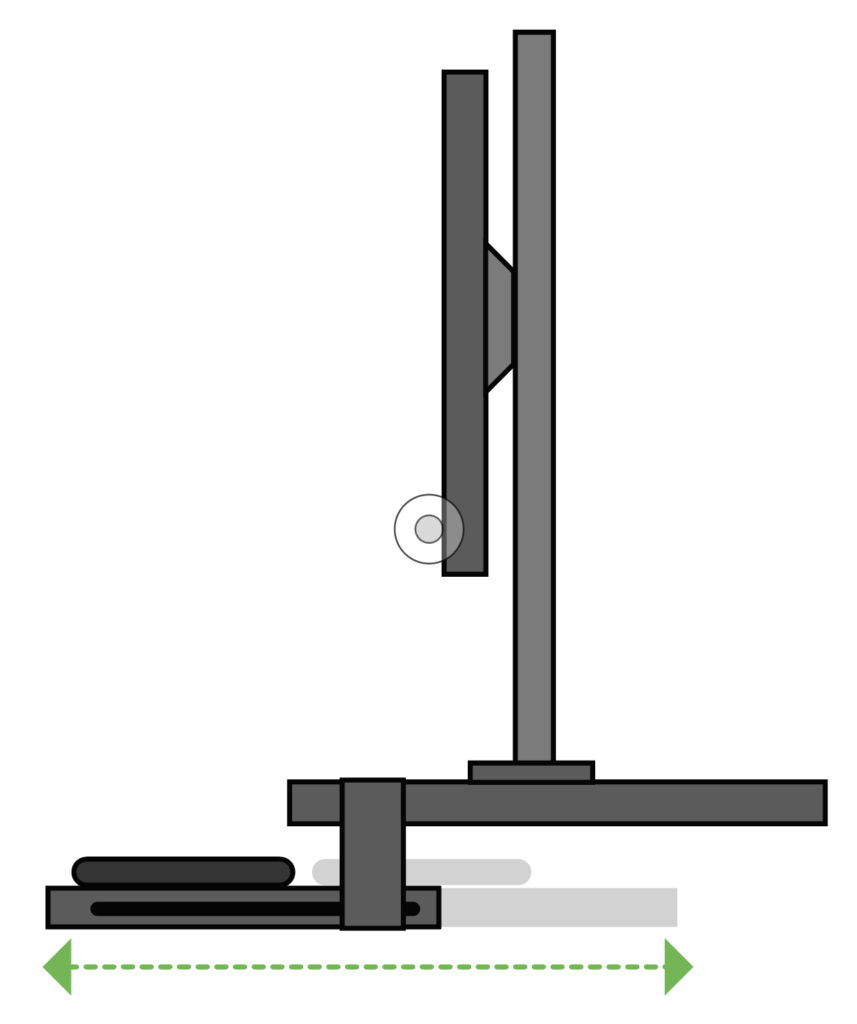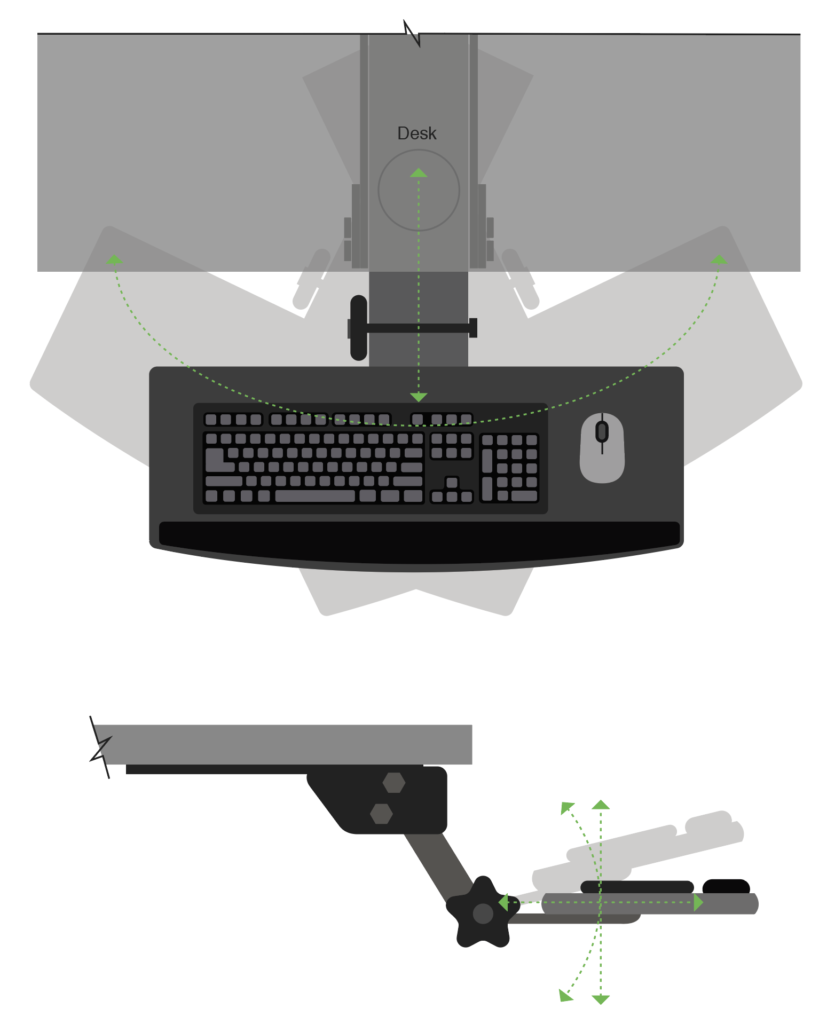Section 5
EXTERNAL EQUIPMENT and ACCESSORIES
This section deals with input and other external devices such as:
![]()
Keyboard and Mouse
![]()
Keyboard Tray
![]()
Footrest
![]()
Document Support
![]()
Telephone
Each of these items is explained in greater detail below:
Before selecting a keyboard, it is important to consider how the user interacts with the device.
The following information regarding the user should be obtained:
• Right or left hand dominant.
• Numeric key pad usage.
• Keyboarding proficiency; touch typist or not.
• Physical characteristics.
Keyboard Placement
• The keyboard should be positioned slightly below elbow height and close to the body in order to maintain neutral postures.
This may require increasing the height of the chair or adjusting the keyboard tray.
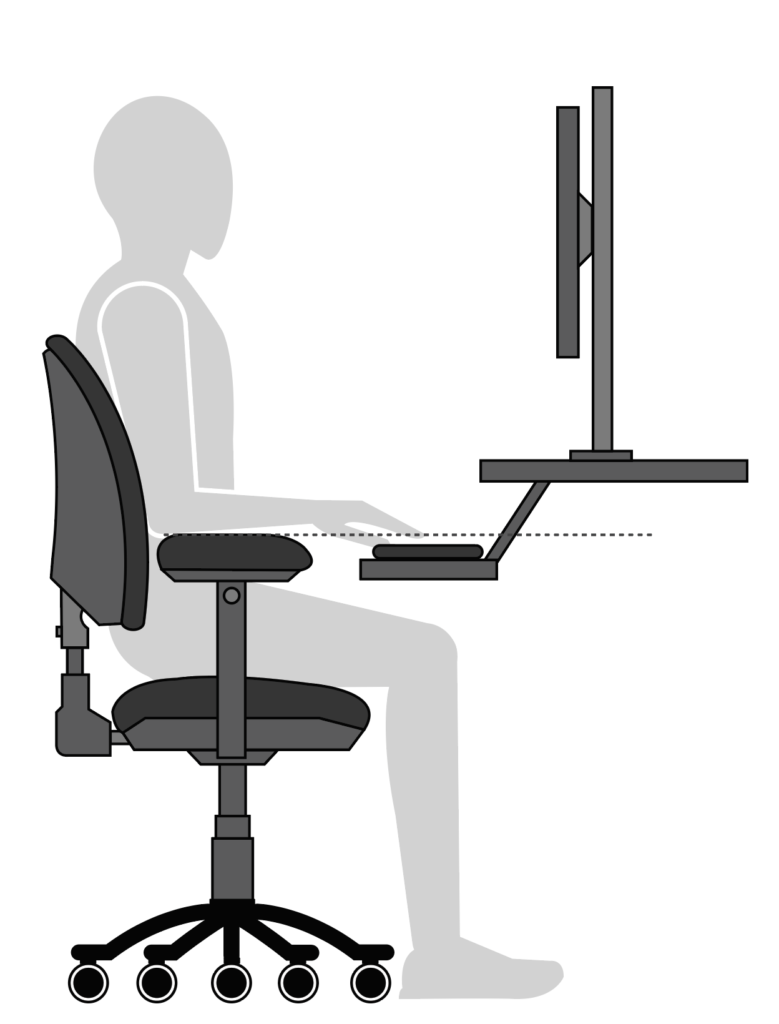
Keyboard positioned slightly below elbow height and close to the body
• The keyboard should be placed on the work surface (flat or slight negative tilt) such that neutral wrist postures are maintained.
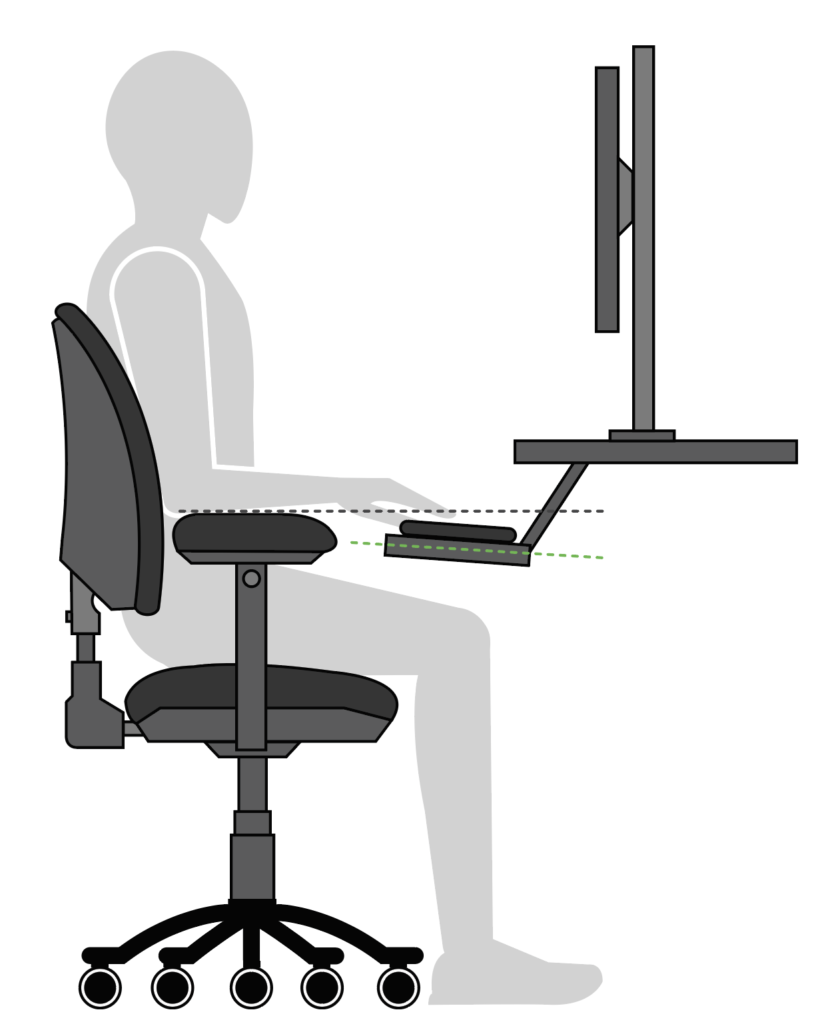
Keyboard placed on work surface (flat or slight negative tilt)
• The user should be able to move the keyboard so that the most frequently used keys can be centred directly in front of the user.
• Typing should be performed with the hands “floating” above the keyboard.
The heel/pad of your hand should only be resting when taking a break from typing.
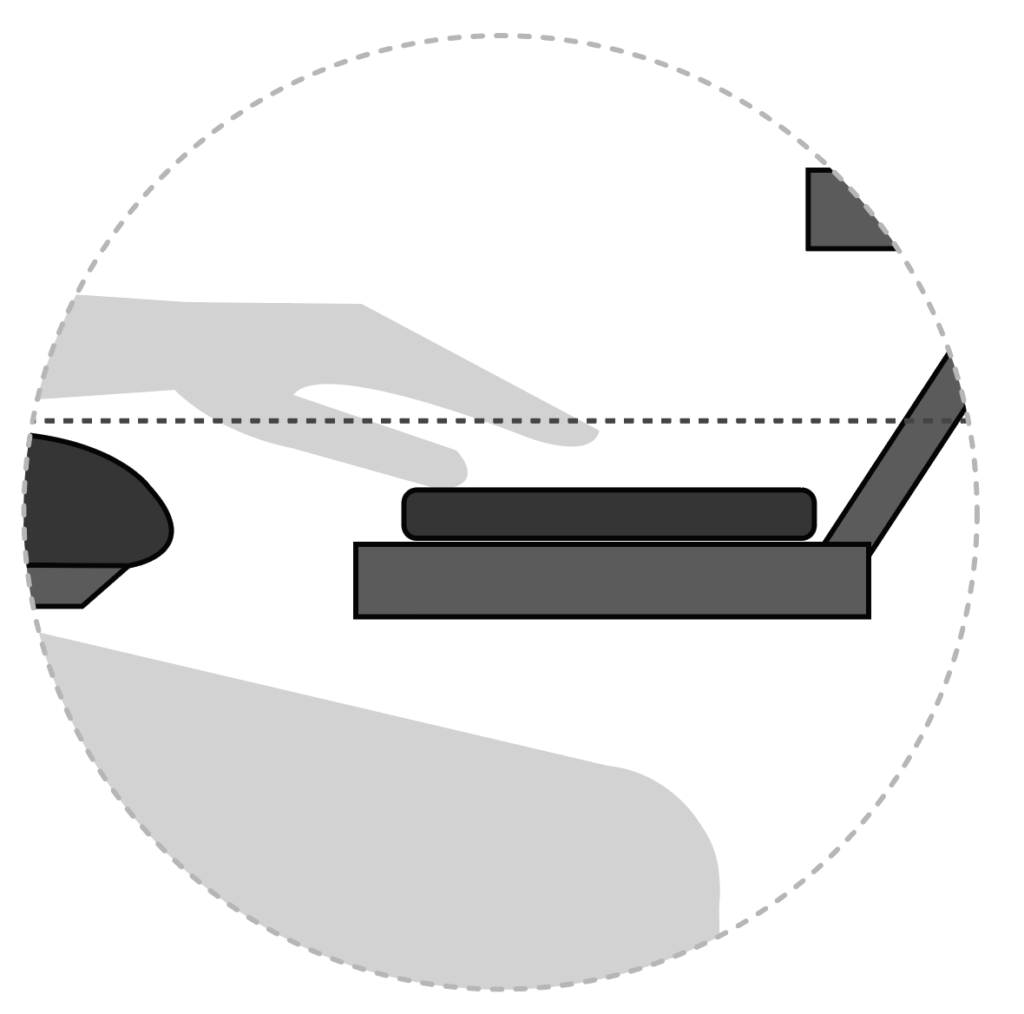
Hands “floating” above the keyboard
Straight Keyboard
Merits:
• Easily usable for those who require visual input of the keyboard.
Limitation:
• Increased reach requirements due to attached numeric key pad.

Contoured Keyboard
Merits:
• Allows for more neutral wrist and hand postures.
• Typically, have built in palm/wrist supports.
Limitations:
• Difficult to utilize if not a proficient typist.
• Orientation may require additional workstation depth.
• Some designs may result in awkward postures.
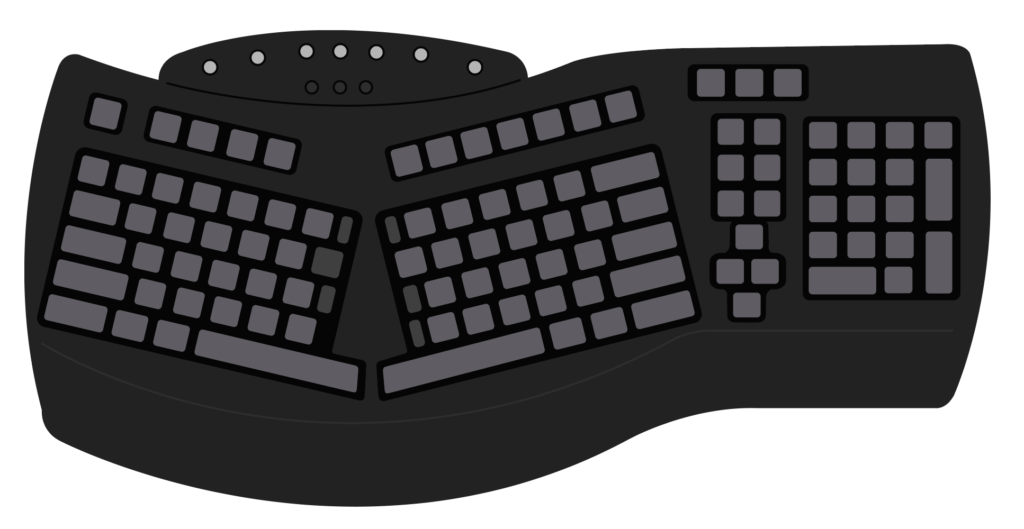
Inverse Keyboard
(left side numeric key pad)
Merits:
• Left side numeric key pad reduces lateral reach for users who mouse with their right hand by allowing mouse to be positioned closer to the alphabetic key pad.
Limitations:
• Ideal for right handed users, not left handed users.
• May be difficult to transition to left handed numeric key pad use.
Split Keyboard
Merits:
• Allows for more neutral wrist, hand, and elbow postures.
• Independent placement of each component allows for preferred configuration by the user.
Limitations:
• Difficult to utilize if not a proficient typist.
• Orientation may require additional workstation depth.
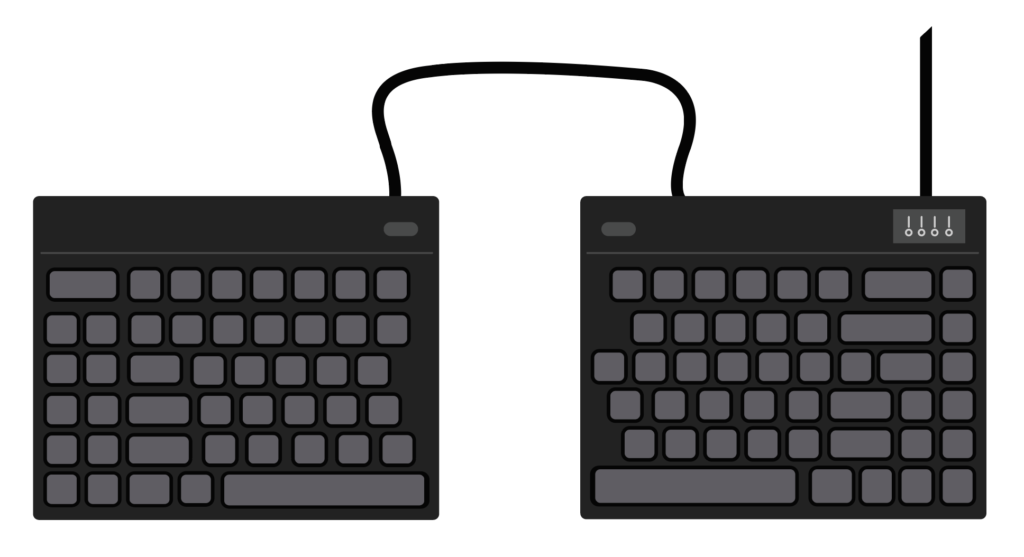
Compact Keyboard
Merits:
• Optimal mouse placement.
• Decreases lateral reach requirements.
Limitation:
• No numeric key pad.
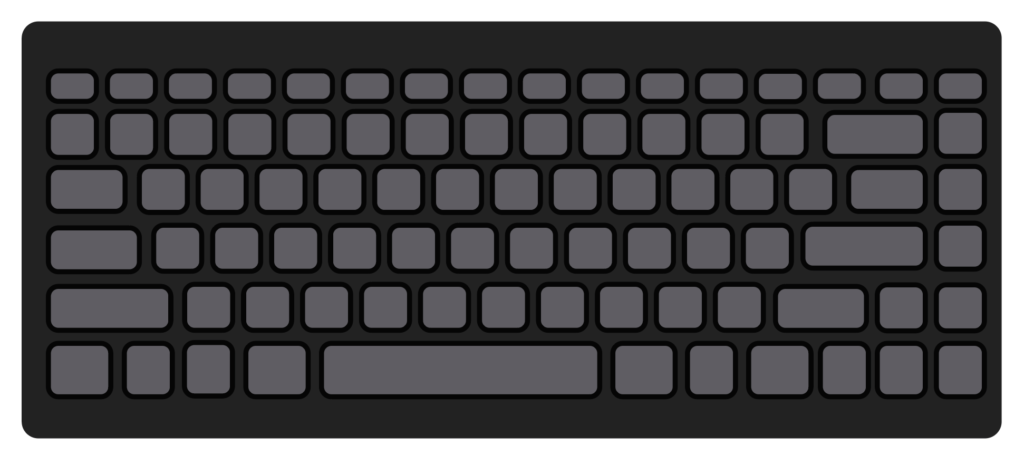
Additional Keyboard Considerations:
• A wireless keyboard allows the user to freely relocate keyboard as required.
• Keyboards can be equipped with either low or high profile keys. Low profile keys require less force to depress and are often preferred by touch typists. High profile keys require more force to depress and are often preferred by typists who require visual and tactile feedback.

Keyboard Profiles
• Palm/wrist supports can be incorporated into, or separate from, the design of the input device.
The use of palm/wrist supports should place the hands and wrists in neutral postures.

Wrist Rest
• Independent numeric keypads may be utilized with compact keyboards to allow placement of each component as required.

Compact Keyboard with Numeric Keypad
The mouse is generally utilized with the user’s dominant hand and should be positioned on the same plane as the keyboard (tray or desktop) and located directly adjacent to it.
• While utilizing the mouse the user should maintain neutral upper body postures.
• Utilize the forearm to move the mouse rather than the wrist alone.
• When using the mouse for extended periods, it may be beneficial to support the arm, or utilize keyboard shortcuts
(See Keyboard Shortcuts in Additional Considerations).
.
Rollermouse™
Merits:
• Allows for left and right hand use.
• Eliminates lateral reach.
• Programmable to accommodate user’s needs.
Limitations:
• May be difficult for user to transition from a standard mouse.
• Requires a training period to become proficient.
• May increase horizontal reach to the keyboard.
• May result in awkward postures.
Trackball Mouse
Merits:
• Allows the thumb or multiple fingers to scroll depending on design.
• Does not require wrist movements.
Limitations:
• May be difficult for user to transition from a standard mouse.
• May not be as effective for tasks requiring precision.
• Potential for overuse and fatigue of finger/thumb muscle groups.
Additional Mouse Considerations
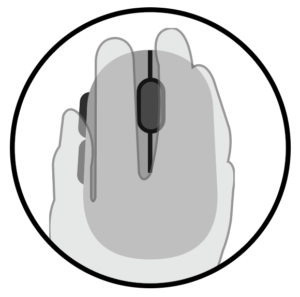
FIT
The mouse is not one size fits all; ensure that the mouse fits the user’s hand.

GRIP
The user should not squeeze the mouse, but should hold it loosely in their hand.
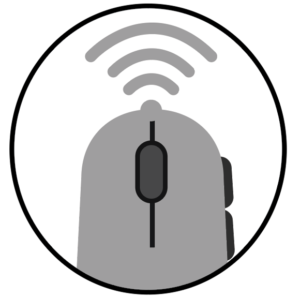
CONNECTION
A wireless mouse allows for optimal placement/movement on the workstation, and assists with cable management by eliminating the requirement of a cord.
When a work surface is too high, or there is not adequate space, a keyboard tray can be utilized to position the mouse and keyboard at a working height that allows the user to obtain neutral postures.
A keyboard tray should:
• Be easy to adjust.
• Move freely beneath the work surface.
• Lock into place.
• Have a solid, stable surface.
• Have angle and height adjustability.
• Be wide enough to accommodate both the mouse and keyboard.
• Allow for both mouse and keyboard to be at the same height.
• Allow clearance between the top of the user’s thighs and the tray.
Non-height Adjustable Slide-out Tray
Merits:
• Allows for limited height reduction of input devices.
Limitations:
• Does not accommodate most users.
• Does not allow for angle and height adjustability.
• Often does not lock into place.
• May not accommodate the keyboard and mouse on the same platform.
• Thigh clearance may be limited dependent upon the user.
• May result in increased reach requirements.
Fully Adjustable Keyboard Tray with Independent Mouse Platform
Merits:
• Allows user to lock into place.
• Allows for height and angle adjustability.
• Accommodates both the mouse and keyboard.
Limitations:
• Does not allow mouse and keyboard to be at the same height.
• May result in increased reach requirements.
• Mouse platform may cause stability issues.
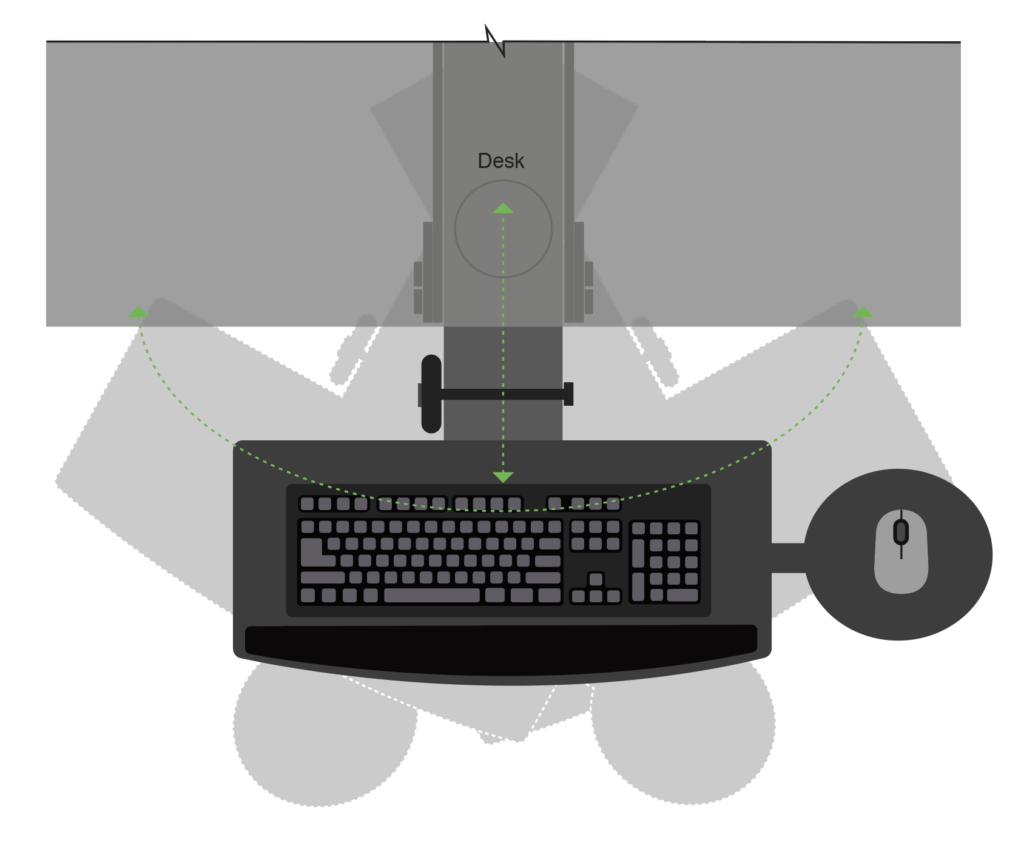
Additional Keyboard Tray Considerations
The keyboard tray should be positioned (flat or slight negative tilt) such that neutral wrist postures are maintained.
![]()
Preventative maintenance (e.g. cleaning and lubricating) is suggested to ensure ease of operation.
![]()
If the user needs to raise their chair in order to acquire neutral postures of the upper extremities,
a footrest may be required to maintain neutral postures of the lower extremities.
A footrest should have the following:
• Adequate area to support the feet.
• Non-slip surface.
• Adequate friction against the floor to eliminate sliding.
• Angle adjustability to allow for variations in foot posture.
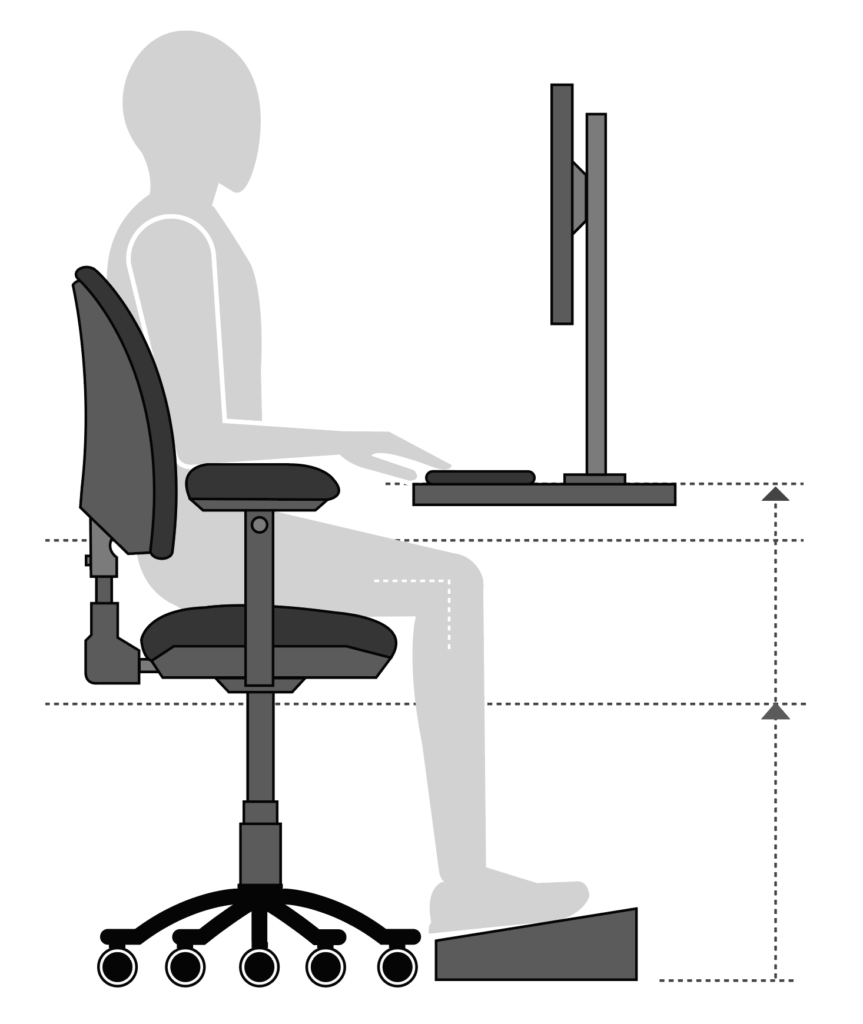
Ensure there is adequate space beneath the workstation to place the footrest so that the user can maintain neutral postures (i.e. ensure workstation supports do not interfere with correct placement). If the user moves their chair frequently between work surfaces, more than one footrest may be required.
Tasks that require the user to read, or refer to, documents consistently require a document support to maintain neutral neck postures. When a user enters information from papers, files, binders, etc., document supports help keep these items upright and aligned with the monitor.
Document supports should:
• Accommodate the size and weight of the document being placed on it (e.g. books, legal/letter paperwork).
• Be placed between the keyboard and monitor, centred directly in front of the user (in-line document holder), OR adjacent to the monitor and at a similar height, depending upon the required tasks.
• Be adjustable in angle.
Placing papers flat on the desk will result in excessive neck flexion, and possibly rotation.
In-line Document Holder
Merits:
• Ideal for users required to write on documents,
not just view them.
• Supports heavier materials (e.g. books or binders).
Limitations:
• Requires various degrees of neck flexion to reference the documents.
• Requires additional desk space to position between the keyboard and monitor.
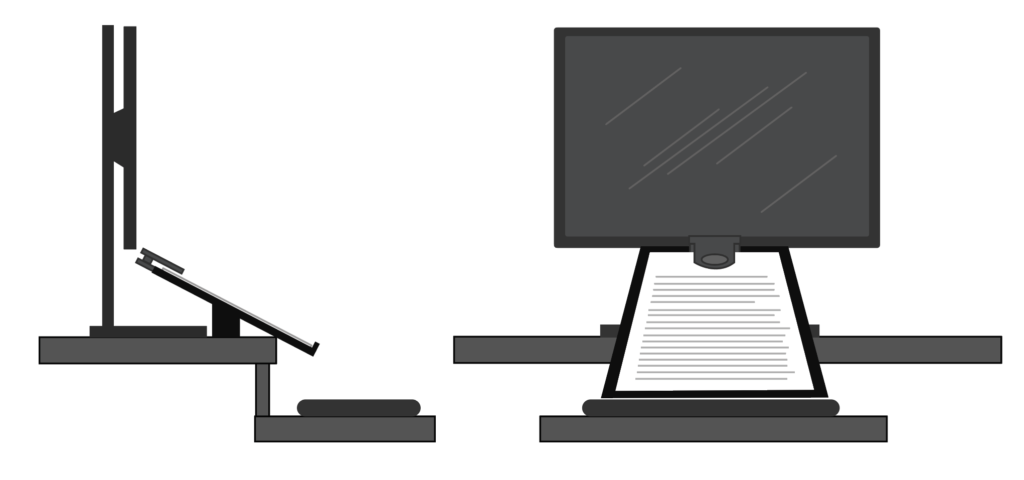
Vertical Free Standing Document Holder
Merits:
• Can be adjustable in height.
• Ideal for referencing portrait view documents.
Limitations:
• Requires various degrees of neck rotation dependent on placement.
• Requires additional lateral desk space.
• Does not support heavier materials (e.g. books or binders).
• Does not provide adequate support for writing upon the documents.
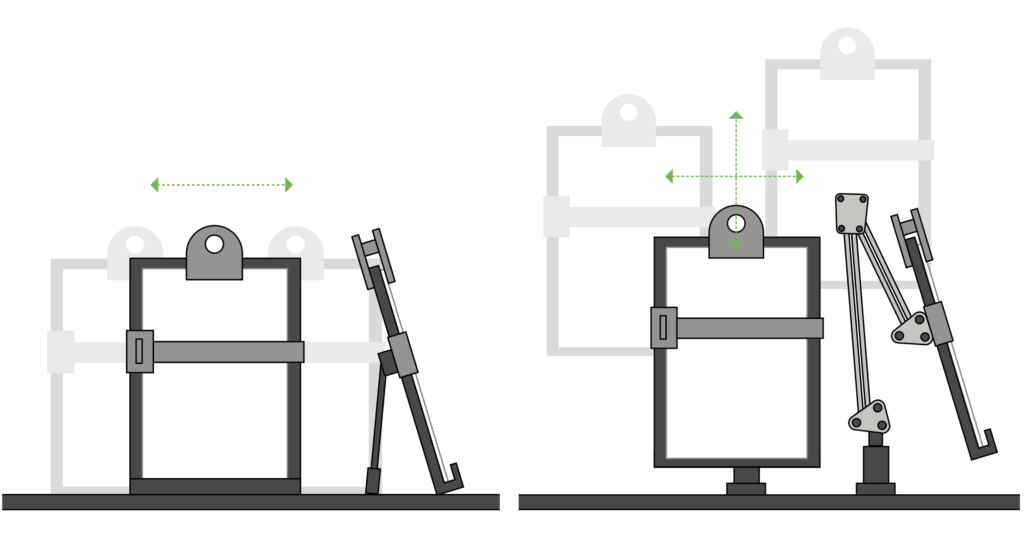
Monitor Mount Document Holder
Merits:
• Does not require additional desk space.
• Ideal for referencing portrait view documents.
• Allows documents to be placed at a similar viewing height as the monitor.
Limitations:
• Requires various degrees of neck rotation dependent on placement.
• Does not support heavier materials (e.g. books or binders).
• Does not allow for writing upon the documents.
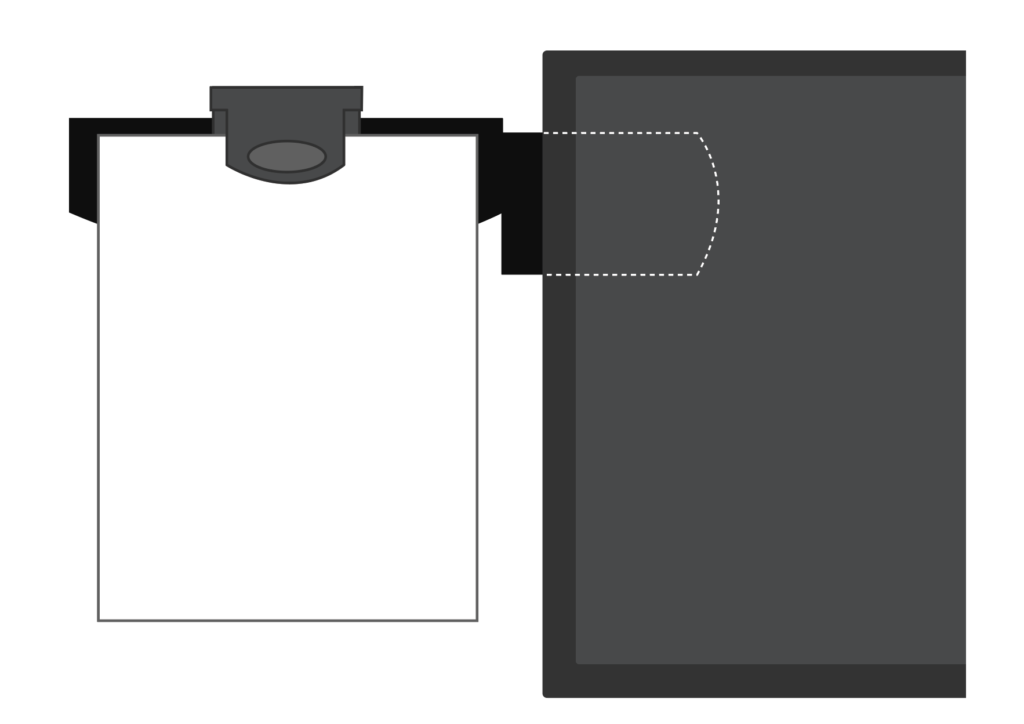
If the user is required to write or type while talking on the telephone, a headset should be utilized.
Headset selection should be based upon user preference, and the specific work tasks.
For example, a wireless headset should be used when the user is required to move around while using the telephone.
If privacy is not a concern, the ‘hands free’ speaker option may be utilized.
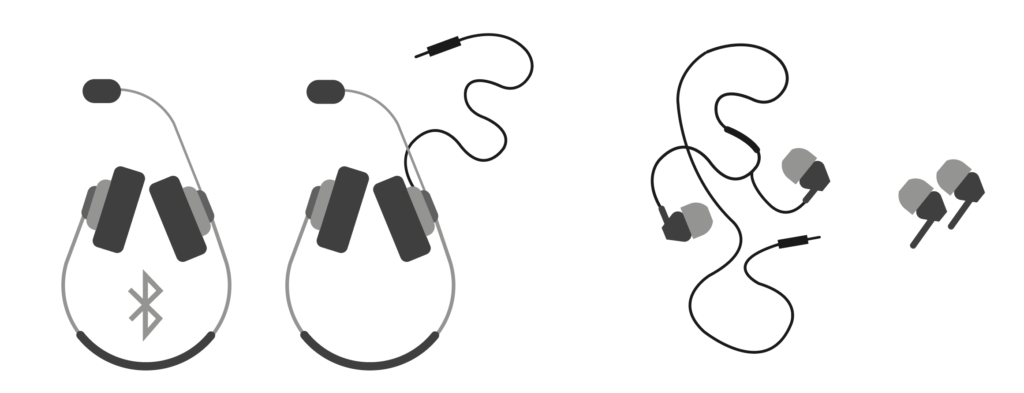
If the telephone is utilized frequently, it should be positioned within the user’s primary reach zone on the side corresponding to the preferred hand to hold it.
(See Work Surfaces – Workspace Envelope).
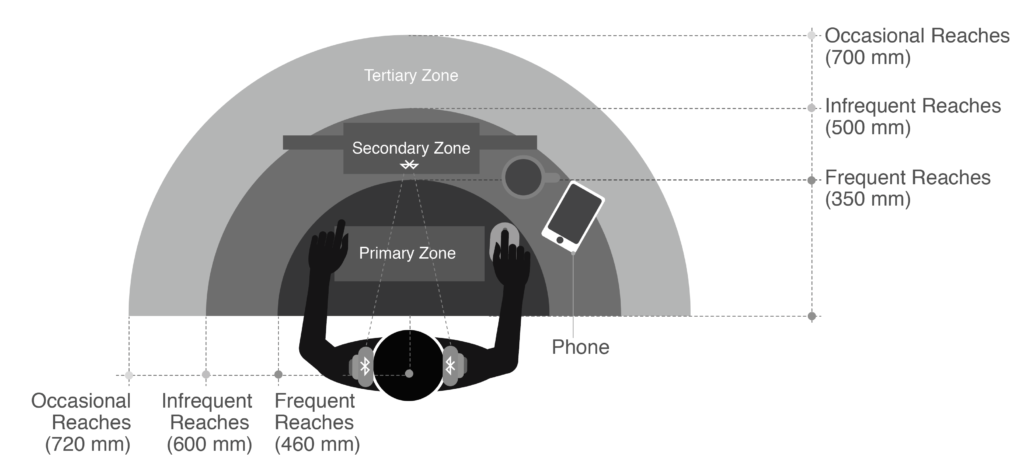
Reach Zone
Navigate to other sections of this Reference Guide using the links below:
